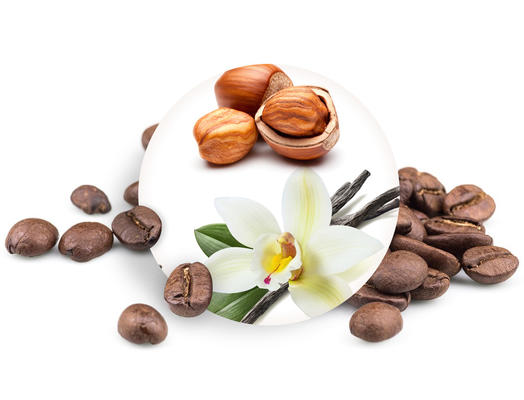cinibeans
VANILLA - HAZELNUT COFFEE BEAN
VANILLA - HAZELNUT COFFEE BEAN
Couldn't load pickup availability
Turn your unpleasant activity into a favourite ritual. Filling out Excel spreadsheets, darning socks or driving long distances no longer has to be a nightmare. Add to all this a vanilla treat and you won't want it all to end. Enjoy a magical shade of 100 percent Arabic and have fun! Place of origin:
Peru
Species:
Typica
Countryside:
Puno Norte
Sea level f. m.:
1900m
Taste:
Vanilla, Walnut
Processing:
Wet
Composition
Arabica 100%,
Aroma
The taste and foam of coffee
The combination of vanilla, hazelnut and coffee - it is nothing short of phenomenal. It is based on plantation coffee from the highlands, processed using a rinsing technique. This is why you can taste the flavour and light sweetness of the fruit from the first sip. The foam is soft, light, dense and compact.
Origin of the coffee
Peru Puno coffee has been known throughout the world for over two hundred years. The ideal soil and climate conditions of the Andes give the coffee its perfect flavour and aroma. High quality processing by the careful hands of experienced farmers is the guarantee of high quality coffee. It is true that approximately 98% of farmers are small-scale producers, but this is not at the expense of quality, quite the contrary. Coffee growing is often their only source of livelihood.
The whole family works in their plantations. Because they buy their coffee from small buyers, like us, they don't have to push the quality or price of the coffee below the minimum. The same cannot be said of the large plantations that sell their coffee to multinationals.
Coffee from coffee bushes (coffea arabica) is harvested several times during the growing season. This eliminates the number of unripe beans. Puno uses a more expensive and demanding processing of coffee beans, known as the washing technique. This results in high quality and long-lasting coffee. The washing process starts by spraying the coffee beans into water in special containers. It is in these vessels that the quality beans are separated from the unripe ones. The skins and flesh are then removed from the high-quality beans using special press plates. This is followed by fermentation of the seeds in special fermentation vessels, and then the beans are dried in direct sunlight or in a drier.
The further flavouring of our coffee is in the hands of our experienced master roasters. Coffee flavouring is done immediately before roasting, when the master roaster sprays the coffee beans with natural-based essential oils. A cheaper method of flavouring coffee is not used at all (when the coffee is flavoured after roasting) because it does not guarantee that the flavoured coffee will retain its aroma for long.
Preparing flavoured coffee in an automatic coffee machine
If you want to use flavoured coffee in an automatic coffee maker with an automatic dispenser, we recommend that you make sure that this is possible in the manual of the coffee maker. If the machine manufacturer does not provide information on flavoured coffee, please follow the recommendations below.
The natural flavouring that the coffee is flavoured with may react with the plastics in the container and bleach if it comes into contact with it for a prolonged period of time.
Always load only as much flavoured coffee into the coffee machine as you will consume immediately.
After the flavoured coffee has been prepared, the next cup should be unflavoured coffee. This will clean the machine of any residues of natural flavouring agents.
The same rule should be followed when grinding flavoured coffee (manual and electric).
Instructions for use
Grind the coffee according to its type.
Use at least 1.5-2 teaspoons (about 7 g) of ground coffee per cup.
Pour off the coffee with water at about 95 °C.

